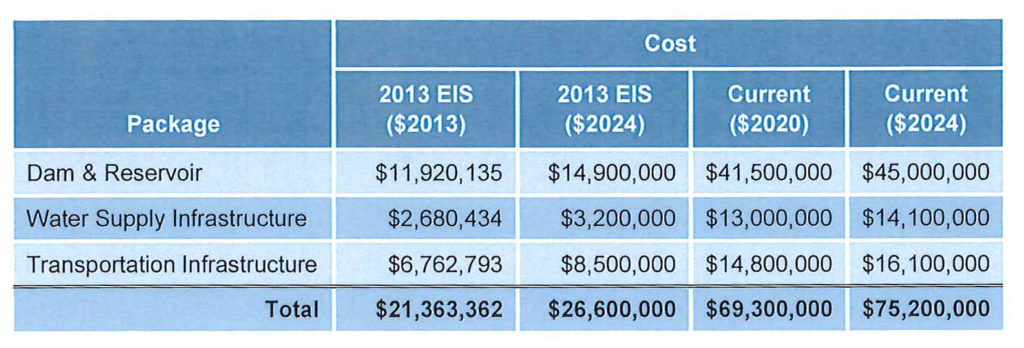On September 17, the latest engineering report, including revised cost projections for the Clarke County Reservoir, was submitted to the Clarke County Reservoir Commission by HDR Engineering. With initial engineering and construction costs estimated in 2013 and after geotechnical research revealed numerous unforeseen challenges, the reservoir project costs have seen an increase beyond the expected 15% to 20% originally included in the 2013 estimates.
“As with any major construction project, we knew costs would increase over time.” said Dave Beck, Project Coordinator for the Clarke County Reservoir Commission. “With the geological studies and necessary changes for water demand and reservoir storage, they increased more than expected.”
When evaluating where the cost increases can be attributed, it becomes clear that time, materials as well as geological and water demand studies changed numerous assumptions made in the original 2013 estimate.
In the 656 page report, HDR Engineering detailed the necessary changes to the project and the causing factors.

After engineering studies came back, costs associated to soil data and hydrology showed higher than originally estimated. These factors, along with projected heavier rains and more potential widespread flooding, based on decades of climate research by state and federal regulatory organizations, increased the 100-year, 24-hour rainfall depth standards from 6.9 inches to 8.3 inches (a +20.3% increase). These changes required the addition of soil treatment as well as watershed and spillway capacity design changes.
The original principal spillway configuration featured a 72-inch diameter conduit. With design changes necessary to accommodate water demand and reservoir storage as well as the increase in rainfall depth standards, a new 96-inch spillway was designed into the dam at a more central location. And the auxiliary spillway design, originally configured in two 200-foot wide channels separated by a dike was reconfigured to a single, 600-foot wide channel.
According to the submitted engineering report submitted by HDR, “Inherent risks in dam planning studies include three uncontrollable factors which have the effect of increasing project costs significantly. These risks include a lengthy planning horizon, unforeseen soils conditions, and changes in the standard practice of dam design.”
As expected, the cost increases came as a surprise to Commission, and discussions for budgeting and funding were immediately started. The Commission recognized the communities need for sustainable, clean and safe water but understand the financial impact delays in this project have made over the years. Ultimately, the consensus of the Commission was to work to find multiple funding sources to meet the need for the public’s water supply.
Beck went on to emphasize that HDR, who are one of the nation’s most contracted dam engineers, has always been transparent with the Commission and worked well to inform and find the best answers for every challenge. The Commission will continue to work closely with HDR on finding solutions for a future-focused water supply for the entire community.
